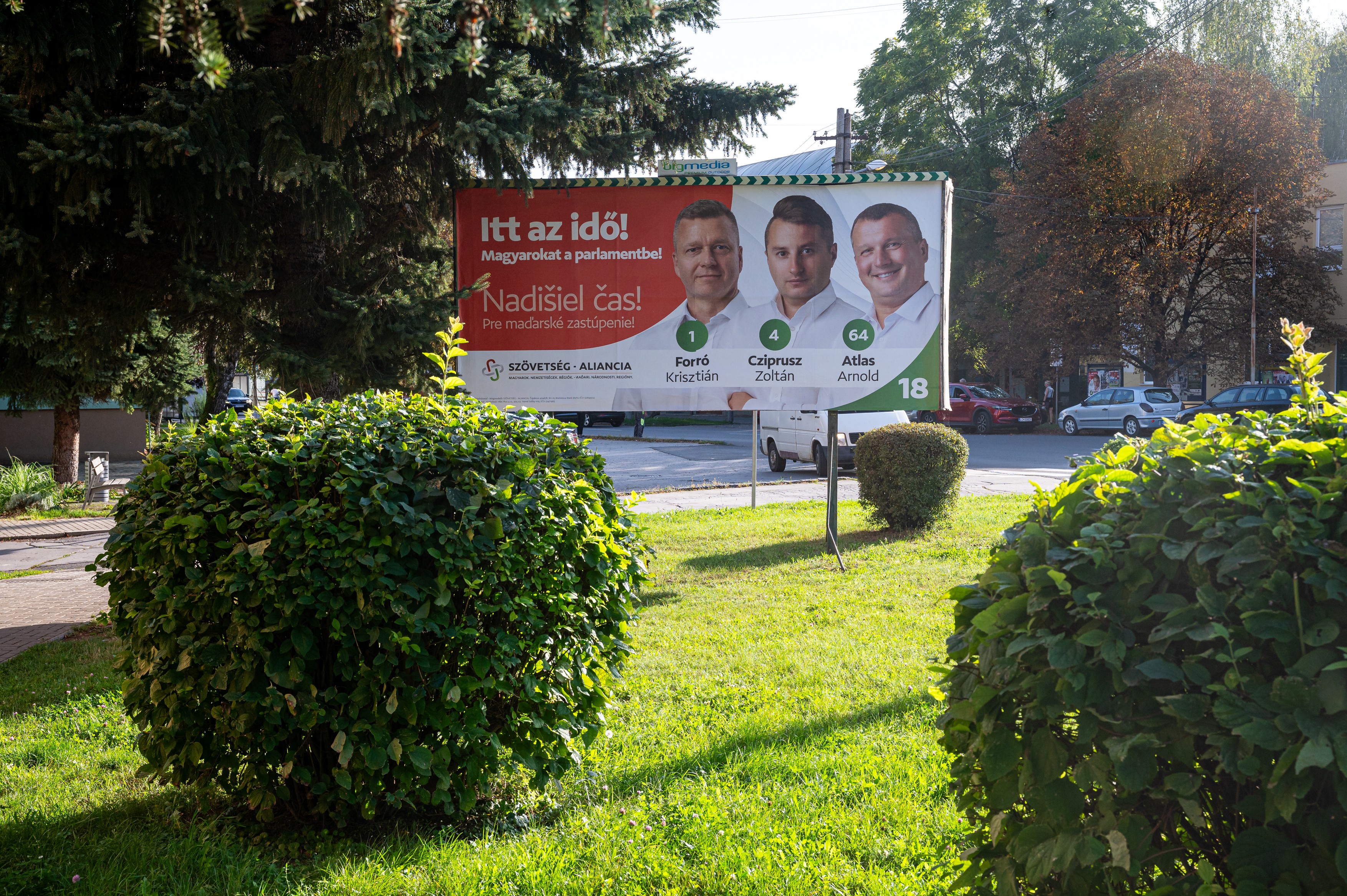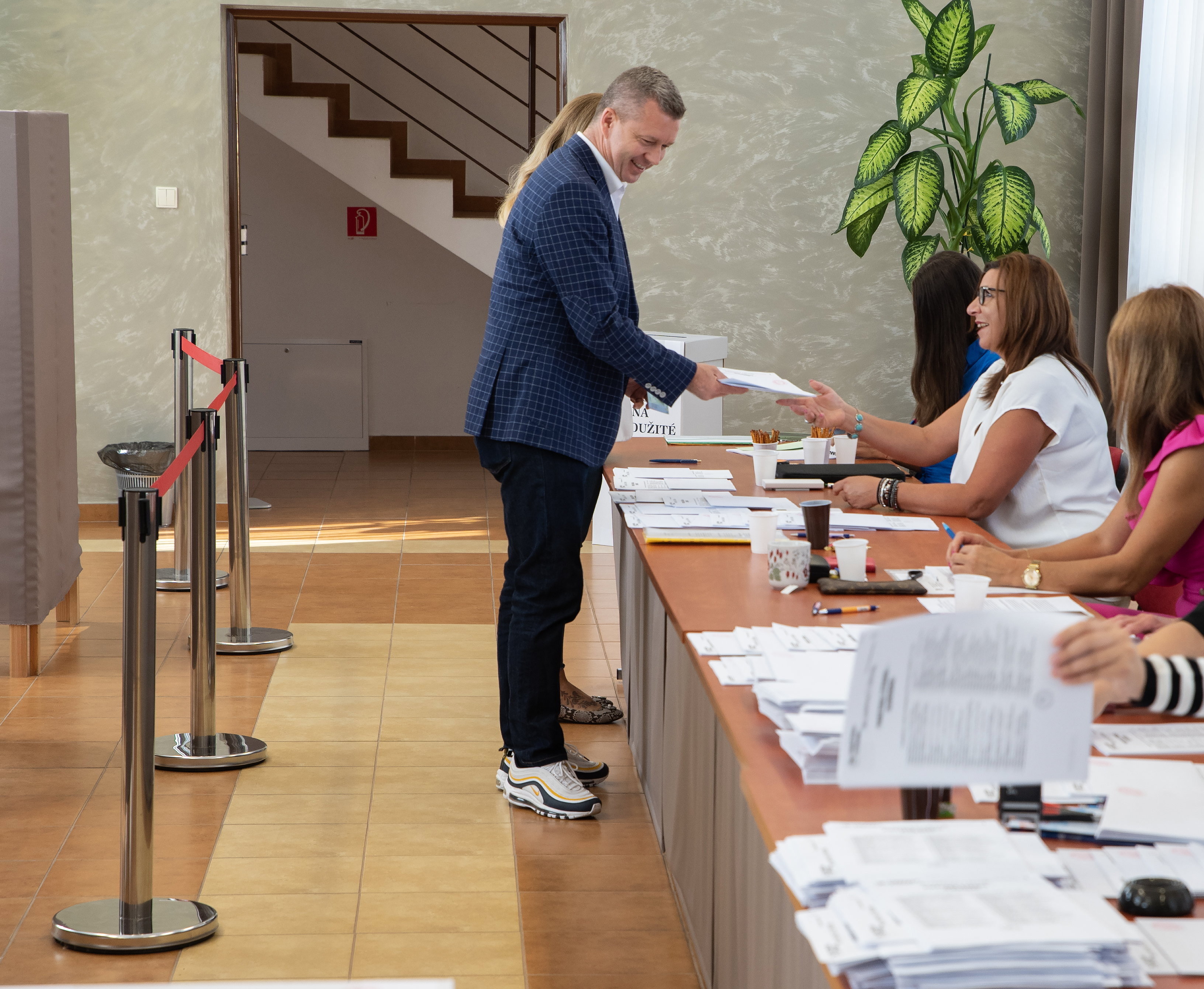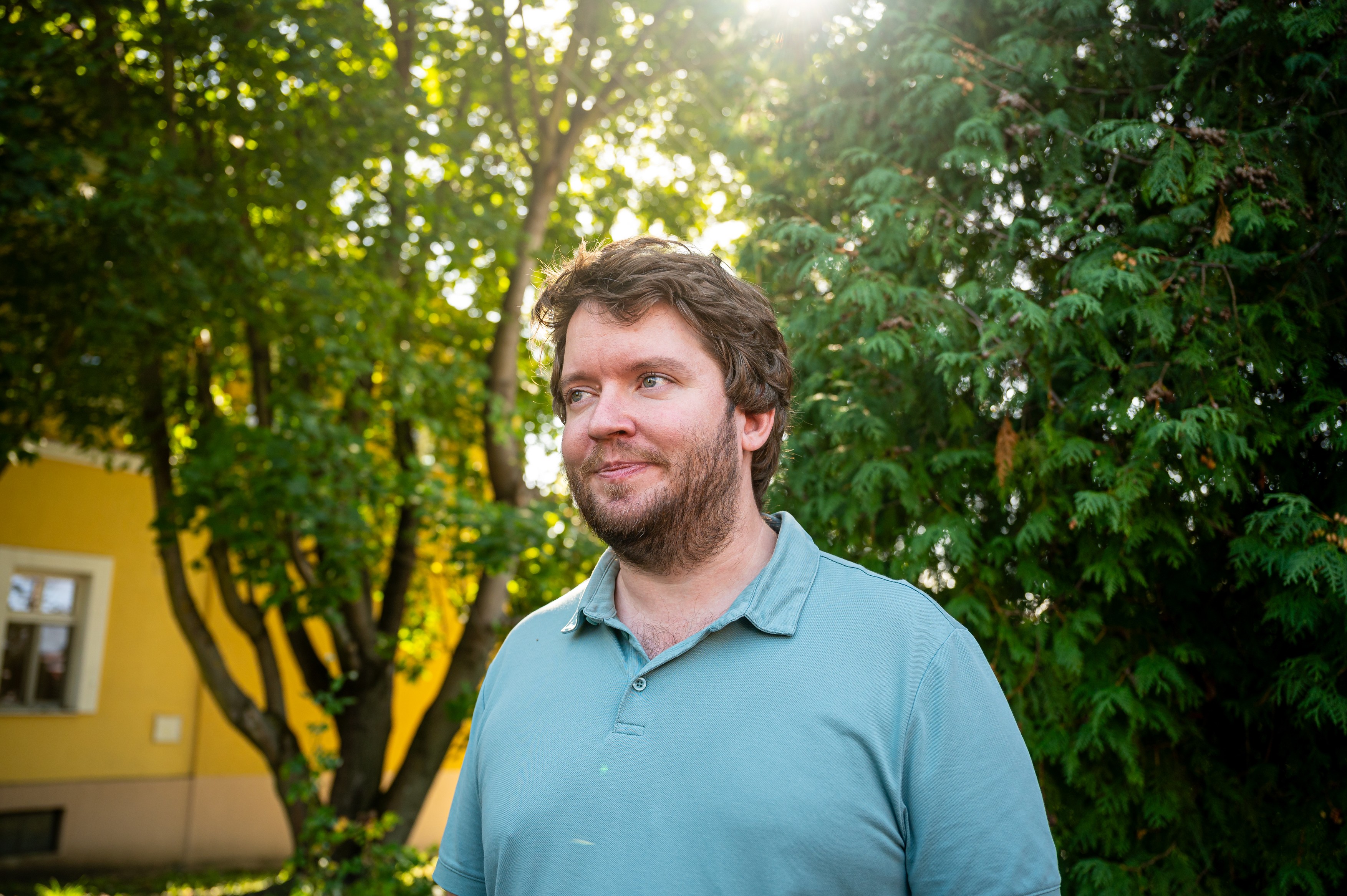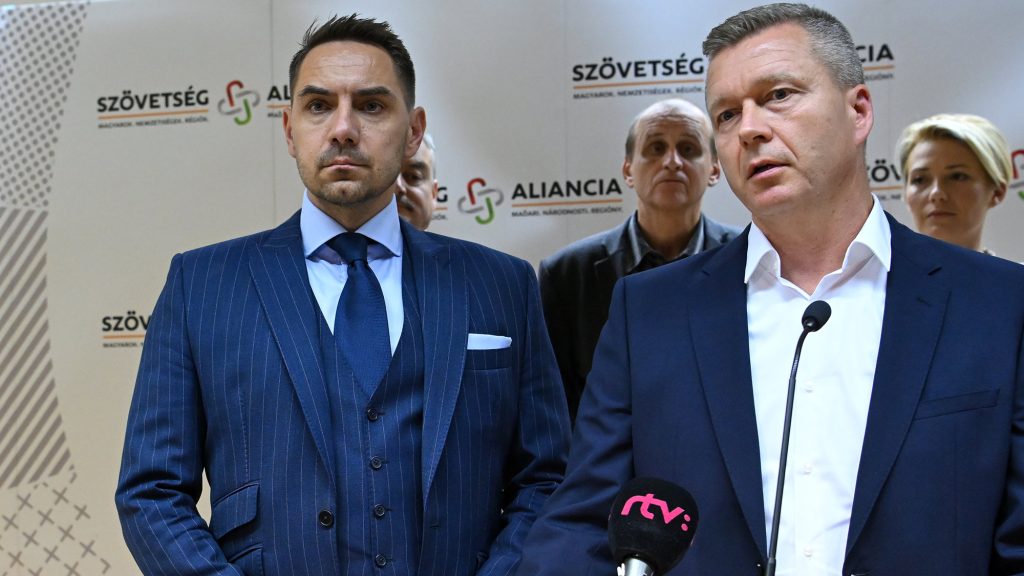The era of ethnic politics is decisively over
– this was published in Slovak on the Facebook page of György Gyimesi, the most prominent candidate of the largest Hungarian party Szövetség, the day after the Slovak elections. He was the most visible candidate for Hungarian representation, using tropes familiar from Hungarian government communication to criticize NATO and the EU, while political adverts featuring his face bore the slogan „On the Side of Peace.” The rather active campaigning efforts bore fruit to some extent, as, with the support of 30,000 preferential votes among Szövetség supporters, he moved from the bottom of the list to the second position, but the party ultimately did not make it into the Slovak legislature. Nevertheless, the party achieved better results than the polls had predicted: Szövetség ultimately garnered the trust of 130,000 voters and finished with 4.3 per cent of total votes. In contrast, the other two Hungarian-related parties performed significantly worse than what the public opinion polls indicated, finishing well below one per cent, essentially being wiped out in Saturday’s election. Which means that
György Gyimesi explained the failure in a pessimistic statement to Napunk (“Our Day”, Hungarian-speaking Slovakian news site), emphasizing his belief that this situation has become permanent. „An ethnic party can no longer enter parliament independently” – stated the politician who had left the victor of the 2020 election, the Slovak populist party OĽaNO (Ordinary People and Independent Personalities) for Szövetség’s list. According to him, in the future, „entry into parliament is only possible through collaboration with other parties, perhaps by running on a joint electoral list.”
I believe that after five defeats, five failures, we can no longer expect any miracles from a sixth attempt
– summarised György Gyimesi.
How did it come to this?
For a long time, the Hungarian Coalition Party (MKP, Magyar Koalíció Pártja) was the sole representative of the Hungarian minority in Slovak national politics. Between 1998 and 2006, they consistently achieved results in the range of 9-11 per cent. However, internal power struggles erupted among the parties forming the coalition, and an eventual split would occur in 2009 with Béla Bugár’s departure to create Slovak-Hungarian mixed formation Most–Híd (meaning “bridge” in both languages, respectively). In 2010, MKP and Most–Híd collectively garnered a near-record vote count of 315,176. Despite this, the conservative-rooted MKP lost its place in the legislature with liberal-leaning Most–Híd taking over its role in the Slovak National Council for the next ten years. Since 2010, there has been no purely ethnic party in the parliament.
The Slovak-Hungarian mixed party became a governing force between 2016 and 2020. Robert Fico’s coalition government would also include The Slovak National Party (SNS), whose former leader, Jan Slotá, was known for his openly hateful anti-Hungarian statements. In 2018, a government crisis emerged due to the murder of investigative journalist Jan Kuciak and his fiancée, followed by the resignation of Fico after passing the baton to Peter Pellegrini. (This year, Pellegrini ran for PM in the colours of his own party, Hlas, garnering the third highest number of votes. If Fico wants another coalition, he needs to reach agreement with them, first and foremost.) However, Most–Híd did not leave the government coalition, for which they were voted out by their supporters in the subsequent election in 2020, their support dwindling to two per cent.
In the same election, the right-wing Hungarian Community Alliance (MKÖ), a quasi-successor to MKP, gained just under four per cent of the vote.
This is why, in 2021, they joined forces to form Szövetség, also incorporating the youthful Összefogás (also meaning “Alliance”). The predecessor parties ceased to exist, and an entirely new political entity emerged, committed to representing the Hungarian minority. The goal was to unite all Hungarian votes under one list, preventing the fragmentation of minority votes. The unity showed its results in the 2022 local and regional elections: Szövetség achieved the best results among all the parties of Slovakia in terms of the number of mayors and county representatives.

The eventual fracture would be brought about by György Gyimesi’s person. In May, a part of Most–Híd, led by former Minister of Environment László Sólymos, left Szövetség due to Gyimesi being included on the party list. Despite Most–Híd making it clear that they would under no circumstances share a list with Gyimesi, Szövetség insisted on his inclusion – even despite that according to József Berényi, the head the MKP’s intra-party platform, the Hungarian government had explicitly asked that Gyimesi would not be included on the joint list, as it would jeopardize the fragile unity. Berényi had previously argued that if Gyimesi had run on behalf of a different Slovak party, he could have channelled away Hungarian votes with a strong regional campaign.
This year’s results are a historic failure
The relationship between Hungarians and Slovaks has been normalising to a significant extent over the past decade. It is quite telling that the interim government is led by an ethnic Hungarian PM, Lajos Ódor. Unlike in Transylvania – where strong cultural and religious divisions exist between the Hungarian minority and the Romanian majority – identity boundaries are more flexible in Slovakia:
there is a high proportion of mixed marriages, and there is significant inter-generational assimilation loss in the Hungarian population.
Nonetheless, several regional structural inequalities affect the Hungarian minority in Slovakia, mainly concentrated in the southern regions of the country: due to poor infrastructure networks, job-creating investments tend to avoid the countryside, while the regional centres (Nyitra/Nitra, Pozsony/Bratislava, Besztercebánya/Banská Bystrica, Kassa/ Košice) are located further to the north, meaning that Hungarians are unable to use their mother tongue within county-level administration. Southern Slovakia represents significantly smaller economic prowess: unemployment is high, and it is challenging to retain the population. These are all issues that can only be effectively addressed at the national level, but the representation of the Hungarian minority has never been in a more challenging situation.
Comparing the 2020 and 2023 election results, Napunk finds that
Most–Híd suffered a significant loss in the previous election, losing half of its supporters – the voters’ punishment for forming a coalition with Fico. In the 2023 election, an additional 60,000 Most–Híd votes were lost compared to the results from three and a half years earlier. Only a negligible portion of these voters switched to Szövetség, with the majority presumably opting for Slovak parties. Higher voter turnout in almost every southern district compared to three and a half years ago indicates that very few former Most–Híd sympathizers chose to abstain from voting. Another possible scenario is that the majority of the lost Most–Híd voters actually switched to Szövetség, which means that former supporters of the Hungarian Community Alliance (MKÖ) had to migrate to Slovak parties. Nonetheless, voter turnout in the southern region remained lower overall, with nine out of the ten districts with the lowest participation rates being in the southern, Hungarian-inhabited areas.
Napunk’s article also reveals that

The most votes, 321,069, were garnered by the then-united MKP in 2002. This time, the three Hungarian parties combined didn’t even reach half of that. Szövetség, which had absorbed the former MKP, along with the two micro-parties, Most–Híd running together with former PM Mikulas Dzurinda’s formation known as Modrí/Kékek (Blue ones), and Magyar Fórum (MF, Hungarian Forum), managed to secure a total of 141,964 votes. Under average or lower turnout conditions, around 140,000 votes are needed to reach the 5 per cent threshold, but this year’s turnout was 68.5 per cent, the highest in recent parliamentary elections.
Where did the Hungarian votes go?
„60 percent of ethnic Hungarians voters voted for Hungarian parties. This is less than a two-thirds ratio,” told us Zoltán Szalay, the editor-in-chief of Pozsony/Bratislava-based Napunk. The remaining 40 per cent went over to Slovak parties:
From this perspective, Hungarian parties also achieved their worst results this year, as in the last election 70 per cent voted for Most–Híd and MKÖ. In 2020, the populist OĽaNO, which ultimately won the election, enjoyed the most significant support from the Hungarian community.
This year, Smer came out on top, multiplying its support in the southern regions. In Dunaszerdahely/Dunajská Streda, three times as many people voted for Fico’s party as in the previous election, while in Komárom/Komárno, twice as many. Overall, about every tenth Slovakian Hungarian voter cast their ballot for the politician previously labelled as the „Hungarian-eater.” Szalay believes that the Hungarian government media played a significant role in this shift. A significant portion of Slovakian Hungarians relies on Hungarian media for information, and even during the campaign silence, Hungarian state TV channel M1 aired an interview with Fico. Meanwhile, Smer’s number one rival, Progressive Slovakia gained the trust of urban, liberal Hungarian voters who couldn’t find their expectations met by Szövetség.
The trend suggests that, election after election, an increasing number of Hungarian voters are shifting to Slovak parties.
Previously, only a fraction of ethnic Hungarians would typically vote for Slovak parties, but this year, it was almost half
– explained Szalay.
There are no simple explanations for the shift within Hungarian votes, but Szalay suggests several possible scenarios.
- Internal conflicts within Hungarian parties may have deterred many Hungarian voters from voting for these parties. Long-standing conflicts have been a source of tension in Slovakian Hungarian politics, and although it seemed that Szövetség could smooth them over, the fragile unity was broken at the last moment.
- As a consequence, pre-election surveys indicated that Hungarian parties were not doing well. Some voters may have refrained from voting for Hungarian parties out of fear of wasting their votes and instead supported Slovak parties that were certain to enter the parliament.
Meanwhile, Szövetség points to the media and pollsters. „The media conveyed information suggesting that there are several Hungarian parties, although we had been emphasizing that only one Hungarian party would have a chance of getting into parliament, and that was Szövetség. Election results showed that the other two parties practically don’t even exist” –Krisztián Forró, the chairman of Szövetség explained to Napunk.

Szalay explained that previous election failures were often also attributed to inaccurate polling and biased media by right-wing Hungarian parties. He, on the other hand, thinks that the two small parties were not overrepresented in the media compared to their size, and, when talking about national polls, every serious media outlet consistently emphasized that Hungarian parties were often underestimated. Therefore, he believes that these arguments are not well-founded.
Will there be any Hungarian presence at all in the parliament?
As for parliamentary representation, the situation for Slovakia’s Hungarian minority has never looked so bleak
– Szalay emphasised. While Hungarian-speaking politicians will be present here and there within the legislature, none of them has previously worked seriously with minority policy, and they are not substantially connected within Southern Slovakia.
In this year’s election, only one ethnically Hungarian representative gained a mandate. Gábor Grendel, representing OĽaNO, received 28,000 preferential votes to his name, making him the 43rd most-voted-for out of the 150 representatives in the parliament. While the politician of Igor Matovič’s anti-corruption, populist party had served as a vice-chairman of the parliament in the previous term, minority policy is not within his areas of expertise: even during his time as a journalist, his main focus was on issues of national security, intelligence services and internal affairs. Besides him, there will be only one other Hungarian-speaking representative in the National Council: his OĽaNO party colleague, the Roma-origin former boxing champion, Vilmos Tankó.
Broadening the scope, we find three additional Hungarian-speaking representatives. Komárom/Komarno-based competitive athlete Erik Vlcek is acting under the banner of Hlas, one of the parties in the emerging Slovak government coalition alongside the victorious Smer and the far-right SNS.
However, he does not identify as a Hungarian representative: his mother tongue is Slovak, but at the same time, he actively wants to represent the southern regions and the Hungarian community in Slovakia. He stated that he would work on making dual citizenship possible. Szalay notes, on the other hand, that Vlcek has not dealt with minority issues before.

In addition to Vlcek, two more Hungarian-speaking politicians won mandates — both of them representing Progressive Slovakia (PS), which is likely to be the largest opposition faction. They are Martin Dubéci, a former member of Most-Hid, and former police chief Jaroslav Spisiak. In other words:
Speaking of his own role, Gabor Grendel told 24.hu: his door has always been open to the Hungarian community in Slovakia. This will apply to the future as well, within the constraints that come with opposition politics. He fears that the government coalition that would ultimately emerge, one led by Smer, will immediately set out to impede corruption investigations. However, he believes that an opposition force, too, can open the way for topics that might receive positive responses within the government – even in the field of minority politics. He emphasized that in the previous government coalition cycle, he had already worked on minority policies, even though outside of the spotlight.
As for representatives who both are natively Hungarian-speaking and ethnically Hungarian, I am probably indeed the only one
– Grendel told our paper. In his view, the main fault on the part of Hungarian parties involved in ethnicity-based politics is a lack of focus on concrete fields of policy and current issues, with too much emphasis on questions regarding Hungarian-ness. However, rising costs of energy and food, as well as immigration issues have just as much of an impact of ethnic Hungarians. That’s why Hungarian voters shifted in favour of solution-oriented Slovak parties, he thinks.
In the past, Grendel had worked together with György Gyimesi in the colours of OL’aNo. To his suggestion that Hungarian parties should seek alliance with Slovak ones, his former party colleague replied – he told us – that within Matovic’s party, there was not only openness to this, but active initiatives as well. While it is a bit too early to focus on this, Grendel believes that this openness will remain in the future as well.
What will happen to the Hungarian parties?
It is a significant blow for the separatist splinters of MF and Most-Hid that they failed to surpass the three per cent threshold, making them ineligible for state support. Given the election results, one could logically assume that they have written themselves out of local public life. However, Zoltán Szalay would be hesitant to make such statements about their fate. None of these parties have indicated that they intend to cease their activities. In fact, Modrí and Most-Híd have expressed their intentions in recent days to continue building their base. „These parties will somehow remain on the political spectrum, but I don’t think they can increase their support,” – Szalay commented.
In contrast, Szövetség will certainly endure, partly because as per their results, they are entitled to more than three million euros in state support. Moreover, they have secured strong positions at the county and mayoral levels in 2022, which also brings in resources. Szalay believes that they can strengthen their voter base in the upcoming presidential and European parliamentary elections. He added that Slovakia usually has the lowest voter turnout in the European Parliament elections across the entire EU, providing an opportunity for them to achieve success.
The bigger question is how they will approach the parliamentary elections. Several politicians from the party openly state that they should never run alone in elections anymore, as this would mean risking votes. This seems like a logical suggestion, but it remains to be seen if they can find a Slovak party willing to cooperate with them
– Szalay assessed, noting that, for now, there doesn’t appear to be a Slovak party on the political stage that could be a stable partner for Szövetség.
„Damn it, If we had known that you had a chance, we would have voted for you.”
Zoltán Cziprusz received the fifth-highest number of preference circles on the Szövetség list: he garnered the elevated trust of 16 thousand voters. This is even more peculiar considering that in his region, Gömör, there is no major contiguous Hungarian population block. Regarding the election results, he explained to our newspaper that it was their best outcome since the party’s split in 2010. They came first in three districts: Rimaszombat/Rimavská Sobota, where Cziprusz hails from, Dunaszerdahely/Dunajská Streda, and Komárom/Komarno. However, they were 20,000 votes short of entering parliament, but he believes there’s potential to build upon. He thinks that a lot was lost due to the media painting the picture that there is no unified Hungarian party, and pollsters significantly overestimated the two other Hungarian parties (there were places where the joint list of Modrí and Most–Híd was assessed at around 2%).
„The biggest losers of the elections are the pollsters,” Cziprusz emphasized. He added that the two other lists combined didn’t even reach 10,000 votes. Moreover, about half of the candidates on the Most–Híd list were Slovak. So, the vote loss that can be attributed to the two additional Hungarian lists could be estimated around 5,000. Cziprusz mentioned that his party had never bought opinion polls, but the same cannot be said for the rest. Some parties were estimated at 6–7 per cent but ended up with only 2 per cent in the elections, which, in his opinion, is an incredibly influential factor.
Regarding the responsibility of the media, Cziprusz told us that there are few independent outlets in Slovakia.
Some parties have media outlets in Hungarian, but that doesn’t make them Hungarian media. There are news portals that were wired in elsewhere, and their task was to prevent Szövetség from entering parliament. Literally
– he stressed.

However, many people grew uncertain about whether Szövetség could surpass the 5% threshold, so they voted for Slovak parties instead.
Many have personally apologised to me, saying: »If we had known that you had a chance, then we would have voted for you«
– Cziprusz recounted. He added that in the central, eastern, and southern regions of Slovakia, voter turnout was, in reality, quite high; it’s just that many people voted outside their home districts, so the 60 per cent figure is quite deceptive.
There is justification for the existence of ethnic politics
– he reacted to the statement of György Gyimesi, who suggests the opposite. He finds Gyimesi’s statement hastily made and believes there’s a foundation to build upon with 130,000 voters and the results of last year’s municipal elections. While there is a need for a Hungarian party, he finds it most sensible to create a joint list. „Slovakia has 78 districts, and we receive votes in 18. So, it is indeed challenging,” – he added.
Cziprusz also mentioned that this is not the time for developing new strategies but rather to organise their ranks for the upcoming internal party election in December.
„Running straight into the wall four times will produce four identical results”
Ábel Ravasz, the former Government Commissioner for Roma Communities, failed to secure a parliamentary mandate. He ran on the list of SaS (Freedom and Solidarity). Positioned at number 31 on the liberal party’s list, he aimed to obtain a mandate through Hungarian preference votes. He argued that if there would be no Hungarian party in parliament, there should at least be individual representation for minority issues. In the end, he received around 2,000 preference votes, which turned out to be insufficient for entry.
Ravasz, in an interview with 24.hu, assessed that this wasn’t about him personally but rather about party preference, as very few people in the southern region chose the SaS list. Nevertheless, he still envisions his future within SaS and aims to focus on minority issues.
I will wait for the next month or so to see the direction events take. It is quite possible that SaS will become a governing party, which would open up various possibilities. The situation, in my view, is better than it appears from the outside. There is an actual negotiation process underway
– said Ravasz. He believes an interesting question will be whether some kind of offer will emerge from this. If that happens, it will likely be taken to internal discussions within Hlas to assess whether there’s an actual chance for an agreement or if it should be merely used as leverage in negotiations with Smer. According to individuals more informed than him, there’s a 30-40% chance that the „better government coalition” will become a reality.
Reflecting on the election, Ravasz stated that there was a fundamental problem with the political ’menu’. Szövetség has now secured around 4.5% of votes for the fourth time, which is just about the size of Southern Slovakia’s conservative Hungarian voter base. „Running straight into the wall four times will produce four identical results. If they don’t open up their voter base in different directions, then the same people will vote for them as before,” – he emphasized. Apart from them, there was no other viable political alternative because people simply rejected the other two Hungarian formations.
There is a kind of ceiling that a conservative and ‘Orbánist’-aligned ethnic party cannot surpass
– Ravasz opined.

Based on the list of Hungarian or Hungarian-speaking representatives who have just entered parliament, Ravasz doesn’t see much of a chance for strong minority-friendly or Hungarian-friendly policies. According to Ravasz, the election process has not yet ended. If a „normal government” was to be formed, the cause of minority policy could be assisted within the executive branch.
It matters a great deal whether it’s a Fico government or a PS-centered government that will emerge. It also matters whether minorities can establish some foothold in the distribution of power, whether Bukovszky László will remain as the government’s minority affairs commissioner next year, or if not, who will fill that position. These are the things we should be paying attention to right now. We will have three and a half years left for Hungarian-party navel-gazing
– he emphasized. Ravasz would accept a government position, but if he doesn’t receive such an offer, he will continue his work in the civil sector. As he mentioned, they have a parliamentary working group that reviews all laws one by one before the assembly voting to see if there are any issues affecting minorities.
But this is very far from what many of us hoped for – that we could succeed in giving a minority-focused aspect to the next parliament – because there’s likely not going to be a single minority-focused individual in the legislature
– Ábel Ravasz concluded his thoughts.






